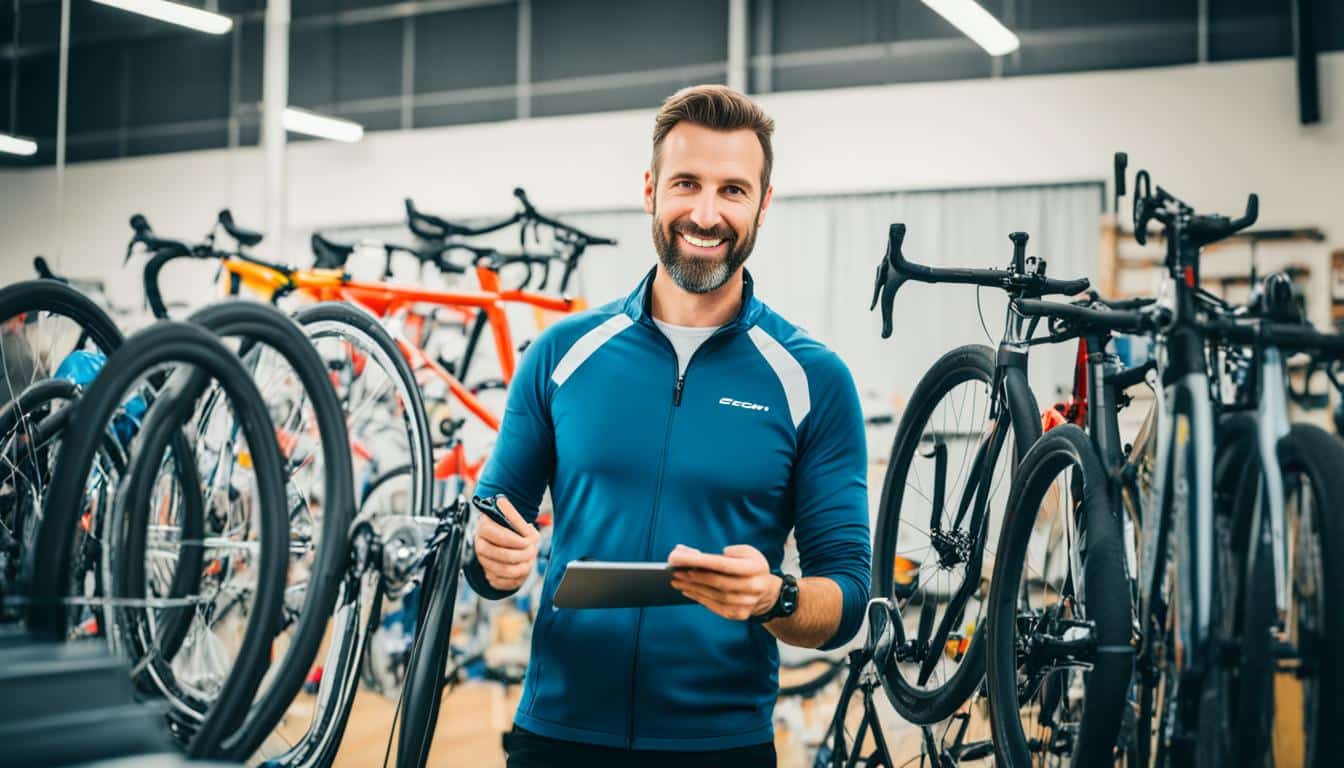When buying a bike, there are several important factors to consider. Whether you’re a seasoned cyclist or a beginner, finding the right bike that suits your needs and preferences is crucial. From choosing the right bike shop to understanding the features and size, taking these factors into account will ensure a successful bike purchase.
Key Takeaways:
- Consider your specific needs and goals for the bike.
- Set a budget that allows you to invest in a quality bike.
- Choose a reputable bike shop that offers expert advice and post-sales support.
- Understand the different bike types and their features.
- Ensure the bike size is appropriate for your height and riding style.
Set Your Goals
Before buying a bike, it’s important to set your goals and determine what you want to do with your new bike. Each type of bike serves different purposes and caters to specific riding styles. By understanding your intended use for the bike, you can narrow down your options and find the perfect fit.
Here are some popular types of bikes to consider:
- Road Bike: Designed for speed and efficiency on paved roads, road bikes are ideal for long-distance rides and racing.
- Mountain Bike: Built for off-road adventures, mountain bikes are perfect for tackling rugged trails and exploring nature.
- Hybrid Bike: Combining elements of road and mountain bikes, hybrid bikes offer versatility and comfort for various terrains.
- Gravel Bike: Designed to handle both pavement and gravel paths, gravel bikes are great for adventurous riders seeking versatility.
- Folding Bike: Compact and portable, folding bikes are convenient for commuters and travelers who need an easy-to-store option.
- City Bike: City bikes prioritize comfort and practicality, making them perfect for daily commuting and leisurely rides in urban areas.
- Singlespeed/Fixie: Known for their simplicity and low maintenance, singlespeed/fixie bikes are popular for urban commuting and bike messengers.
By identifying your goals for the bike, whether it’s road cycling, mountain biking, commuting, or leisurely rides around the city, you can choose a bike that meets your specific needs.
Image:
| Type of Bike | Intended Use |
|---|---|
| Road Bike | Long-distance rides, racing |
| Mountain Bike | Off-road adventures, trail riding |
| Hybrid Bike | Versatile for various terrains |
| Gravel Bike | Pavement and gravel paths |
| Folding Bike | Portable for commuting and traveling |
| City Bike | Comfortable rides in urban areas |
| Singlespeed/Fixie | Simple and low maintenance biking |
Set Your Budget

When it comes to buying a bike, one of the most crucial steps is setting your budget. Determining how much you can afford to spend will help guide your choices and ensure you find a bike that meets your needs without breaking the bank. While there may be cheaper options available, investing in a quality bike within a certain price range is recommended to ensure you get a bike that will last and provide a satisfying riding experience.
Whether you’re looking for a cheap road bike, a cheap mountain bike, or a high-end purchase, there are options available to suit every budget. If you’re on a tighter budget, don’t worry – you can still find great bikes under £1,000. In fact, some of the best road bikes and mountain bikes on the market can be found within this price range. These bikes offer a combination of affordability and quality, making them a great choice for budget-conscious riders.
When considering your budget, it’s important to focus on the overall value you will be getting within your price range. While it might be tempting to opt for the cheapest option available, keep in mind that quality is key. A bike that is too cheap may not provide the durability and performance you need for a satisfying riding experience. By investing in a quality bike within your budget, you can enjoy a bike that will serve you well for years to come.
Now that you have a better understanding of the importance of setting a budget when buying a bike, let’s move on to the next step – choosing the right bike shop. This will ensure that you have a positive buying experience and are able to find the perfect bike for your needs.
| Budget Range | Recommended Bike Options |
|---|---|
| Under £500 | Entry-level bikes with basic components |
| £500 – £1,000 | Mid-range bikes with better components and features |
| Above £1,000 | High-end bikes with top-of-the-line components and advanced features |
Choose a Shop
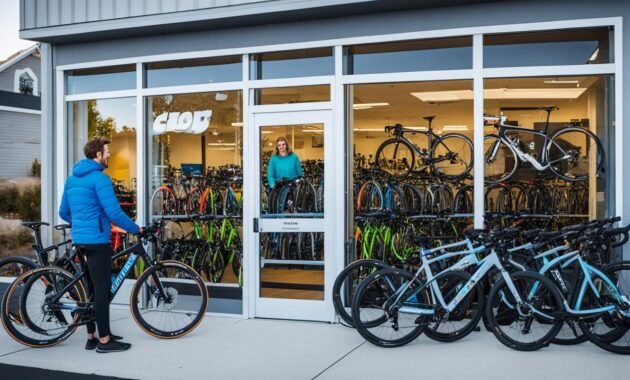
Choosing the right bike shop is a crucial step when purchasing your new bike. A reputable bike shop will not only provide you with expert advice but also ensure that you have a seamless experience from start to finish. Whether you’re a seasoned cyclist or a beginner, finding a shop that suits your needs is essential.
Why Choose a Bike Shop?
When you buy a bike from a bricks-and-mortar bike shop, you gain access to a wealth of knowledge and support. The experts at the shop can guide you in selecting the right bike for your needs, taking into account factors such as your riding style, terrain, and budget. They can also provide valuable insight on bike maintenance, upgrades, and accessories.
“A local bike shop offers the personal touch, expert advice, and ongoing support that online retailers can’t provide.” – Cycling Enthusiast
Additionally, a good bike shop will offer post-delivery check-ups, ensuring that your new bike is in optimal condition. They can help you fine-tune the bike’s fit, make necessary adjustments, and address any concerns you may have. This level of personalized service is invaluable, especially for first-time buyers.
Online Retailers and Auction Sites
While online retailers and auction sites may offer competitive prices and a wide range of options, it’s important to consider the trade-offs. These platforms may not provide the same level of expert advice and personal assistance as a bricks-and-mortar bike shop. Without the opportunity for a test ride or face-to-face interaction, it can be challenging to ensure that you’re making the right purchase.
Specialized Shops and Brands
Some bike shops specialize in certain brands or cater to specific types of riders, such as road cyclists or mountain bikers. Visiting these specialized shops can be beneficial if you’re looking for industry-specific brands or seeking expert advice on a particular type of bike. These shops often have a deep understanding of the products they carry and can provide valuable insights based on their expertise.
Considerations for Choosing a Shop
Here are some key considerations to keep in mind when choosing a bike shop:
- Expertise and knowledge of the staff
- Selection of bike brands and models
- Customer reviews and reputation
- Availability of post-delivery check-ups and maintenance services
- Convenience of location and operating hours
By taking these factors into account, you can make an informed decision and ensure a positive bike buying experience.
Choose the Right Bike
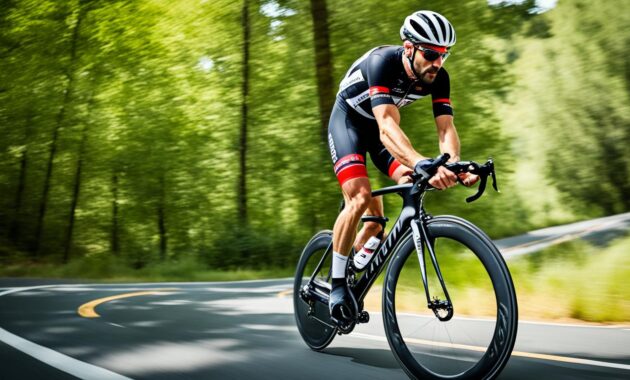
Once you have set your goals and budget, it’s time to choose the right bike. Consider the specific type of bike that will best suit your needs, whether it’s a road bike, mountain bike, or hybrid bike. Each type offers unique features and benefits for different riding environments and preferences.
“The road bike is designed for speed and efficiency on paved roads, with lightweight frames and narrow tires that reduce rolling resistance. Mountain bikes, on the other hand, are built for off-road adventures, featuring robust frames, wide tires, and suspension systems to handle rough terrains. Hybrid bikes combine elements of both road and mountain bikes, making them versatile options for riders seeking a mix of comfort and performance.”
When choosing a bike, it’s essential to consider the specific features and components that will enhance your riding experience. For road bikes, factors such as gear ratio, aerodynamic design, and lightweight materials can significantly impact speed and efficiency. Mountain bikes may have features like suspension systems, disc brakes, and durable frames to handle challenging trails. Hybrid bikes often prioritize comfort with features like wider saddles, upright riding positions, and wider tires for stability.
Comfort and safety are paramount when selecting a bike. Look for features that prioritize ride comfort, such as padded seats, adjustable handlebars, and shock-absorbing mechanisms. Safety features, such as reliable braking systems, reflectors, and properly fitted helmets, should also be considered to ensure your well-being while riding.
Table: Features and Components of Road, Mountain, and Hybrid Bikes
| Features | Components | |
|---|---|---|
| Road Bike | – Lightweight frame for speed – Narrow tires for reduced rolling resistance – Aerodynamic design for optimal efficiency – Multiple gears for various terrain |
– Drop handlebars for aerodynamics – Caliper or disc brakes for responsive stopping power – High-quality drivetrain components for smooth shifting |
| Mountain Bike | – Robust frame for off-road durability – Wide tires for traction on rough terrain – Suspension system for shock absorption – Versatile gears for steep climbs and descents |
– Flat handlebars for control on uneven trails – Disc brakes for reliable stopping power – Quality suspension forks for absorbing impact |
| Hybrid Bike | – Comfortable upright riding position – Wider tires for stability on varied surfaces – Versatility for both on-road and light off-road riding |
– Adjustable handlebars for personalized fit – Reliable rim or disc brakes for safe stopping – Multi-speed drivetrain for adaptability |
Another crucial aspect to consider is the gear ratio, which determines how easily you can pedal and maintain speed. Lower gear ratios are ideal for climbing steep hills or navigating challenging terrain, while higher gear ratios are suited for faster speeds on flat roads. Select a bike with a gear range that aligns with your intended riding conditions.
The choice of frame material can also impact the performance and comfort of your bike. Common frame materials include aluminum, carbon fiber, steel, and titanium. Each material has its benefits, such as lightweight agility, vibration damping, durability, or a balance of these qualities. Consider your riding style, terrain, and personal preferences when selecting a frame material.
Ultimately, choosing the right bike involves assessing your riding goals, preferences, and the specific features and components that will enhance your riding experience. Take your time to research different bike types, test ride models you are interested in, and consult with experts to find the perfect bike for your needs.
Get the Right Size
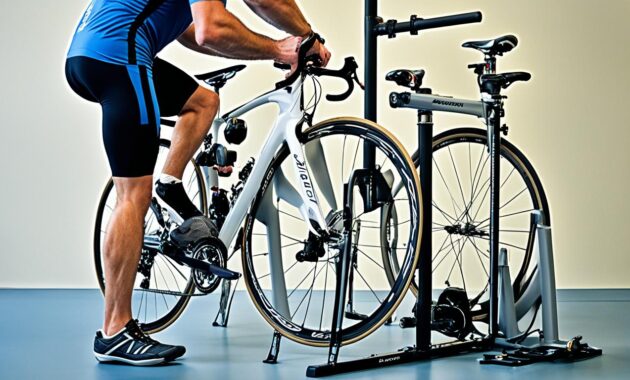
Getting the right size bike is crucial for comfort and optimal performance. When choosing a bike, consider factors such as your rider height, reach to the handlebars, and saddle height in order to determine the correct size. Fitting a bike properly ensures that you can ride comfortably and efficiently, reducing the risk of discomfort or injury.
One way to determine the right size bike for you is by consulting a bike size chart. These charts provide a general guideline based on rider height and inseam measurement. By inputting your measurements, you can get a recommended bike size that will suit your body proportions. Keep in mind that this is just a starting point and individual preferences may vary.
For a more accurate fit, it’s advisable to visit a bike shop where professionals can help you find the perfect size. They can assess your body proportions, riding style, and preferences to recommend the appropriate bike size. Bike shops often have experienced staff who can make adjustments to the bike’s components, such as handlebars and saddle height, for a customized fit.
Proper bike fit is essential for overall comfort and performance. It ensures that you have the correct reach to the handlebars, allowing you to maintain a comfortable riding position and reducing strain on your back, shoulders, and neck. Additionally, the saddle height should be adjusted so that your leg is slightly bent at the bottom of the pedal stroke for maximum power and efficiency.
Key Considerations for Getting the Right Size Bike:
- Measure your rider height and inseam length
- Consult a bike size chart for general guidelines
- Visit a bike shop for professional assistance in fitting a bike
- Ensure the correct reach to the handlebars for a comfortable riding position
- Adjust the saddle height for optimal power and efficiency
Expert Tip:
“Finding the right bike size is crucial for a comfortable and enjoyable riding experience. Don’t underestimate the importance of professional guidance in fitting a bike. A well-fitting bike can make a world of difference in your overall performance and enjoyment.” – Tom Smith, Certified Bike Fitting Specialist
| Bike Size | Rider Height Range |
|---|---|
| Extra Small (XS) | Less than 5’2″ (157.5 cm) |
| Small (S) | 5’2″ – 5’6″ (157.5 cm – 167.5 cm) |
| Medium (M) | 5’6″ – 5’10” (167.5 cm – 178 cm) |
| Large (L) | 5’10” – 6’1″ (178 cm – 185.5 cm) |
| Extra Large (XL) | 6’1″ and above (185.5 cm and above) |
Test Ride
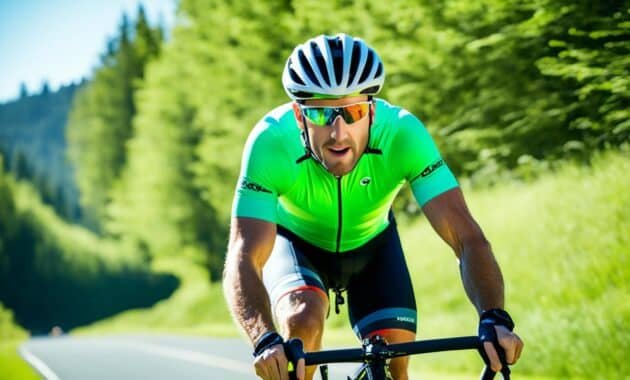
Taking a test ride is an essential step before finalizing your bike purchase. It allows you to experience firsthand the riding position, bike handling, comfort, and overall performance of the bike. A test ride gives you the opportunity to assess how the bike responds to your riding style and terrain preferences, ensuring that it is the perfect fit for you.
During the test ride, pay close attention to the bike’s riding position. Ensure that it offers the level of comfort and support you need for extended rides. A proper riding position is crucial for maintaining good posture and reducing strain on your back, neck, and wrists.
Furthermore, testing the bike’s handling capabilities will give you insight into its agility and responsiveness. Consider how the bike performs when cornering, navigating tight spaces, and maneuvering through challenging terrains. A well-handling bike will provide you with confidence and control, enhancing your overall riding experience.
Comfort is another important aspect to evaluate during a test ride. Notice how the bike feels as you pedal and ride over various surfaces. Assess the level of vibration dampening and shock absorption, ensuring that the bike absorbs road imperfections for a smoother and more enjoyable ride.
Ultimately, the bike’s performance is a key consideration. Test its acceleration, braking, and gear shifting capabilities. Pay attention to how the bike responds to your inputs and how it behaves at different speeds. A high-performing bike will enable you to achieve your desired riding goals, whether it’s for leisurely rides, daily commuting, or intense workouts.
When planning your test ride, consider visiting a local bike shop. Most reputable bike shops provide test ride opportunities, allowing you to try out different models and sizes. They can also offer guidance and recommendations based on their expertise and your specific needs.
In addition to physical stores, some online retailers may offer test ride options. Ensure to check their policies and procedures if you prefer to buy through an online platform. Online retailers may collaborate with local bike shops to provide test ride facilities, or they may have their own try-before-you-buy programs.
Taking the time to test ride a bike is invaluable. It ensures that you choose a bike that not only meets your expectations but also provides the optimal riding experience. So, before making a final decision, don’t hesitate to try before you buy!
Consider Suspension
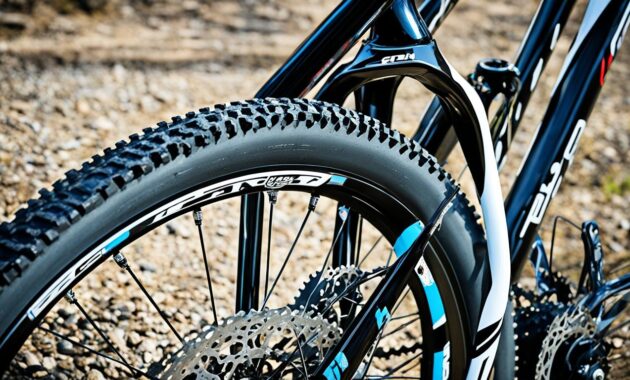
When purchasing a bike, one important factor to consider is whether you need suspension. Suspension refers to the system that helps absorb shocks and vibrations when riding on uneven or off-road terrain, providing increased comfort and traction.
There are two types of bike suspension to consider: front suspension and full suspension. Front suspension, also known as a hardtail, is a system that features a suspension fork in the front of the bike, while the rear remains rigid. Full suspension, on the other hand, includes both a front suspension fork and a rear suspension system.
Both front suspension and full suspension bikes are designed for off-road riding. They excel in providing a smoother ride over rough terrain, as the suspension helps absorb impacts, reducing the strain on the rider’s body. This added comfort can be particularly beneficial for longer rides or more challenging trails.
Another advantage of suspension is improved traction. The suspension helps keep the wheels in contact with the ground, allowing for better control and stability, especially on loose or uneven surfaces.
However, it’s important to note that suspension does add weight to the bike. This can affect the bike’s overall performance, especially when climbing or riding on paved surfaces. Therefore, it’s crucial to assess the terrain you plan to ride on and determine whether suspension is suitable for your needs. If you primarily ride on smoother, paved roads, a bike without suspension may suffice.
Additionally, the type of suspension and its performance can vary depending on the bike’s design, components, and quality. It’s important to consider factors such as the fork’s travel (the maximum distance it can compress), the quality of the suspension components, and the bike’s overall weight.
If you’re unsure about whether suspension is necessary for your riding style, it’s recommended to test ride different types of bikes, both with and without suspension, to feel the difference firsthand. This will help you determine which option provides the best balance of comfort, traction, and bike weight for your specific needs.
| Pros | Cons | |
|---|---|---|
| Front Suspension |
|
|
| Full Suspension |
|
|
Where to Buy
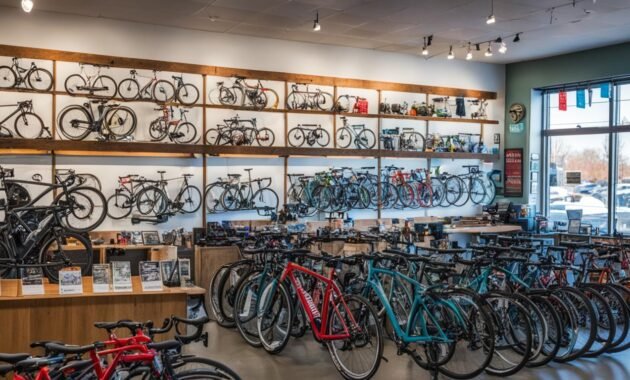
When it comes to buying a bike, you have various options available to you. You can choose to visit a local bike shop or explore the wide range of bikes offered by online retailers and direct-sales brands. Each option has its advantages and it’s essential to consider your preferences and requirements before making a decision.
If you decide to visit a local bike shop, you’ll have the opportunity to seek expert advice from experienced professionals. They can guide you in choosing the right bike that suits your needs, whether it’s for daily commuting, mountain biking, or long-distance cycling. Local bike shops also provide you with the chance to test ride different models and ensure a proper fit.
“Local bike shops not only offer quality bikes and personalized service, but they also provide post-delivery check-ups to ensure your bike is in optimal condition. Additionally, establishing a relationship with a local bike shop can be valuable for maintenance, repairs, and acquiring replacement parts as needed.”
On the other hand, if you prefer the convenience of online shopping, there are numerous online retailers and direct-sales brands to consider. Online retailers often offer competitive pricing and a wider selection of bikes. However, it’s important to carefully read customer reviews to ensure you’re purchasing from a reputable source.
One aspect to keep in mind when buying a bike online is the bike assembly. Some online retailers provide bikes that are partially assembled, requiring you to assemble the remaining components yourself. Others offer fully assembled bikes that are ready to ride. Consider your technical skills and the assistance you’ll need during the assembly process.
Whether you buy from a local bike shop or online, the purchase of a bike is the start of an ongoing relationship with the seller. Regular maintenance and the occasional need for replacement parts are part of owning a bike. By establishing a rapport with your local bike shop or directly communicating with online retailers, you can ensure a smooth and seamless experience throughout your cycling journey.
| Pros of Buying from a Local Bike Shop | Pros of Buying from Online Retailers and Direct-Sales Brands |
|---|---|
| Expert advice and personalized service | Competitive pricing |
| Opportunity for test rides and proper bike fit | Wide selection of bikes available |
| Post-delivery check-ups and ongoing support | Convenience of online shopping |
Additional Considerations
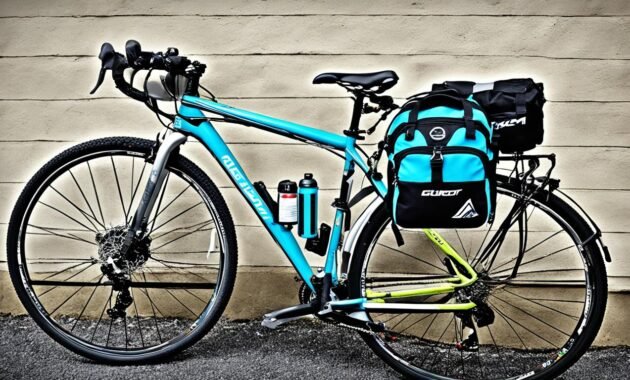
When buying a bike, there are a few additional considerations to keep in mind in order to enhance your cycling experience and ensure the longevity of your bike.
1. Bike Accessories: Think about the accessories you may need to enhance your safety and comfort while riding. Essential accessories include helmets, bottle cages, and gloves. These items not only protect you but also enhance your overall riding experience.
2. Bike Maintenance: Regular maintenance is crucial for keeping your bike in optimal condition. Plan for tune-ups and inspections to address any potential issues and ensure smooth, safe rides. Regularly clean and lubricate your bike to protect it from dirt and corrosion.
3. Cycling Goals: Consider your cycling goals when buying a bike. Whether you’re aiming for long-distance rides, off-road adventures, or city commuting, choose a bike that aligns with your goals. This will enhance your riding experience and keep you motivated to achieve your cycling ambitions.
4. Upgrades: Keep in mind that you may want to make upgrades to your bike in the future. Whether it’s improving the components, adding accessories, or upgrading to a new bike model, choose a bike that allows for potential upgrades and customization.
5. Bike Longevity: Choosing a bike that is made with high-quality materials and components will contribute to its longevity. Consider bikes from reputable brands that have a track record for durability and reliability. Investing in a bike with longevity in mind will save you money in the long run.
“Accessories, regular maintenance, and consideration of your cycling goals are important factors to keep in mind when buying a bike. Choose a bike that aligns with your needs and invest in quality components for bike longevity.”
Also Read : Mike’s Bike: Top-Quality Cycling Gear & Service
Conclusion
Buying a bike is an exciting but important decision that requires careful consideration. By following this bike buying guide and applying the tips for buying a bike, you can make an informed choice to find the perfect fit for your needs.
Start by setting your goals and determining the type of bike that aligns with your intended use. Consider factors such as whether you need a road bike, mountain bike, or hybrid bike. Next, set your budget to ensure you find a bike that offers both quality and value within that price range.
Once you’ve narrowed down your options, choose a reputable bike shop or online retailer that can provide expert advice and assistance. Take advantage of test rides to get a feel for the bike’s comfort, handling, and performance. Ensure you find the right bike size by considering your height, reach to the handlebars, and saddle height.
Finally, think about additional considerations such as bike suspension, where to buy your bike, and the importance of bike accessories and maintenance. By taking all these factors into account, you can confidently make a bike purchase that will bring you joy and satisfaction for years to come.
FAQs
Q: What are the different types of bikes to consider when buying a bike?
A: When buying a bike, you can consider road bikes, mountain bikes, electric bikes, hybrid bikes, gravel bikes, folding bikes, and more.
Q: How do I know which bike frame size is right for me?
A: It is essential to choose a bike frame size that fits your height and riding style. You can consult with a bike mechanic or visit a local shop for assistance.
Q: Should I buy a bike online or from a physical store?
A: Whether you choose to buy online or from a local shop depends on your preferences. Buying online may offer more convenience, while a physical store allows you to test ride the bike before purchasing.
Q: What factors should I consider when deciding on the type of bike to buy?
A: Consider the type of terrain you will be riding on, the distance you plan to ride, your budget, and the features you require in a bike when making your decision.
Q: How important is it to test ride a bike before buying?
A: Test riding a bike is crucial as it allows you to ensure that the bike fits you comfortably, rides smoothly, and meets your expectations for performance.
Q: What should I look for in a bike if I want to ride off-road?
A: If you plan to ride off-road, look for a bike with features like sturdy bike frame, front and rear suspension, and durable tires that can handle rough terrain.
Q: Is it better to buy a pre-assembled bike or a custom bike?
A: Whether you choose a pre-assembled bike or a custom bike depends on your preferences and needs. Custom bikes allow you to tailor the bike to your exact specifications, while pre-assembled bikes may offer convenience.
Source Links
- https://www.yellowjersey.co.uk/the-draft/buying-a-bike/
- https://www.bikeradar.com/advice/buyers-guides/buying-a-bike
- https://www.rei.com/learn/expert-advice/bicycle.html
